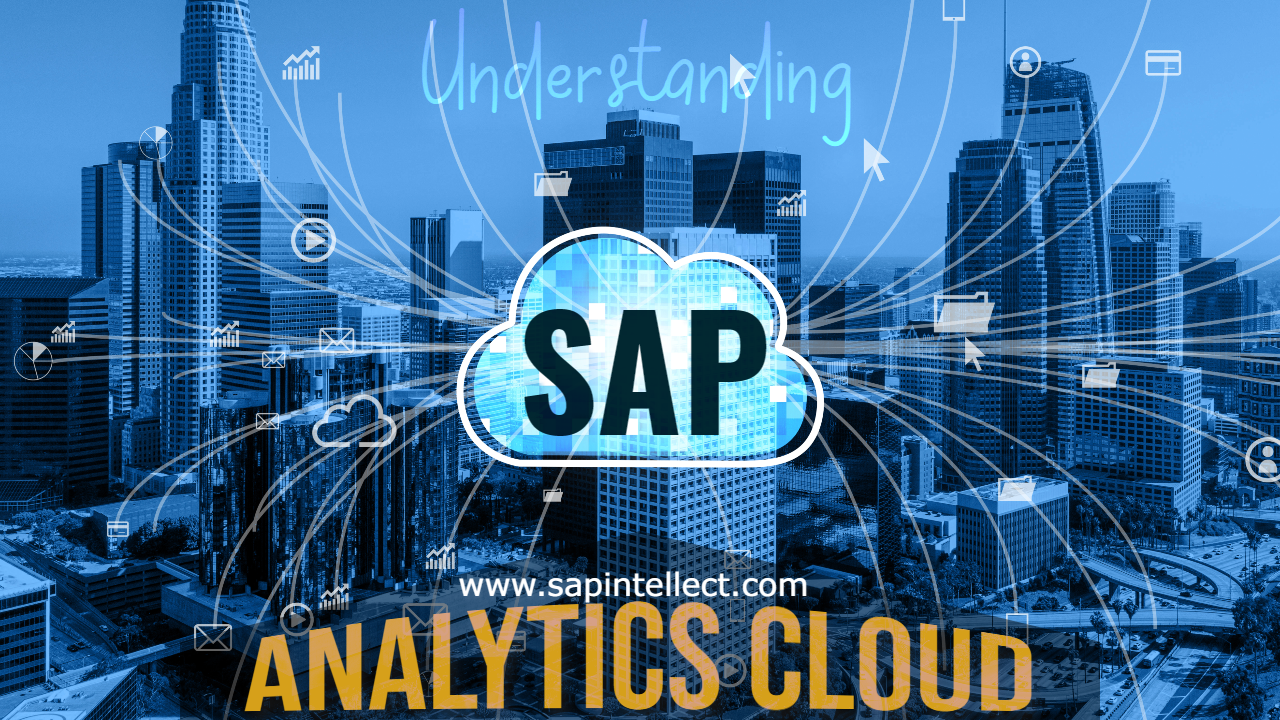How SAP Analytics Cloud is Transforming Business Intelligence: A Comprehensive Guide
In today’s data-driven business landscape, organizations face a multitude of challenges when it comes to making informed decisions. The sheer volume of data generated daily can overwhelm even the most seasoned professionals. This is where SAP Analytics Cloud (SAC) steps in as a powerful solution that empowers businesses to harness the full potential of their data, transform it into actionable insights, and drive strategic decision-making. In this comprehensive guide, we will explore SAP Analytics Cloud in detail, including its features, benefits, use cases, and how it is revolutionizing the world of business intelligence.
Chapter 1: Understanding SAP Analytics Cloud
1.1 What is SAP Analytics Cloud?
SAP Analytics Cloud, often abbreviated as SAC, is a cloud-based business intelligence (BI) platform developed by SAP, a global leader in enterprise software. SAC integrates business intelligence, augmented analytics, and planning capabilities into a single, unified solution, making it an indispensable tool for organizations of all sizes and industries.
1.2 Key Features of SAP Analytics Cloud
SAP Analytics Cloud boasts a wide array of features designed to simplify data analysis and decision-making:
- Data Connectivity: SAC supports connections to a variety of data sources, including on-premises databases, cloud databases, spreadsheets, and web services, allowing users to consolidate data from multiple sources.
- Data Modeling: It provides a user-friendly interface for data modeling, enabling users to prepare and transform data without the need for complex coding or scripting.
- Data Visualization: SAC offers a robust suite of visualization tools to create compelling and interactive dashboards and reports, making it easy to convey insights to stakeholders.
- Predictive Analytics: The platform includes augmented analytics capabilities, allowing users to leverage machine learning algorithms to discover hidden patterns and make data-driven predictions.
- Collaboration: SAC facilitates collaboration by enabling users to share dashboards, reports, and data stories with colleagues, fostering a culture of data-driven decision-making.
- Planning and Budgeting: It allows organizations to create and manage budgets, forecasts, and planning scenarios within the same platform, aligning financial objectives with data-driven insights.
- Mobile Accessibility: Users can access SAC on mobile devices, ensuring that critical insights are available anytime, anywhere.
1.3 Licensing Options
SAP Analytics Cloud offers various licensing options, including free trial, individual user licenses, and enterprise licenses tailored to the specific needs of organizations. This flexibility makes it accessible to startups, small businesses, and large enterprises alike.
Chapter 2: Benefits of SAP Analytics Cloud
2.1 Improved Decision-Making
One of the most significant benefits of SAP Analytics Cloud is its ability to empower organizations to make data-driven decisions. By providing access to real-time data and advanced analytics tools, SAC helps businesses respond quickly to changing market conditions and make informed choices.
2.2 Enhanced Collaboration
SAP Analytics Cloud fosters collaboration among teams by allowing users to share insights and reports with colleagues, regardless of their geographical location. This promotes cross-functional alignment and ensures that everyone is working with the same data.
2.3 Cost Savings
As a cloud-based solution, SAC eliminates the need for costly on-premises hardware and software installations. Moreover, it offers subscription-based pricing, allowing organizations to scale their usage up or down as needed, reducing unnecessary expenses.
2.4 Agility and Scalability
SAC’s cloud-native architecture ensures scalability and agility, enabling organizations to adapt to changing business requirements. Whether you need to analyze a small dataset or process massive volumes of data, SAC can scale to meet your needs.
2.5 Data Security and Compliance
SAP places a strong emphasis on data security and compliance. SAC adheres to industry-standard security practices, including encryption, access controls, and audit trails, to protect sensitive data and ensure compliance with regulations like GDPR and HIPAA.
2.6 User-Friendly Interface
SAC’s intuitive interface makes it accessible to users of all technical backgrounds. Data modeling and report creation can be accomplished with drag-and-drop actions, reducing the learning curve for new users.
2.7 Predictive Analytics
The inclusion of predictive analytics in SAC empowers organizations to anticipate future trends and make proactive decisions. This capability is particularly valuable for industries such as finance, retail, and manufacturing.
Chapter 3: Use Cases for SAP Analytics Cloud
3.1 Financial Analysis
SAP Analytics Cloud is widely used for financial planning, budgeting, and analysis. Finance teams can create dynamic financial reports, forecast revenue, and monitor expenses in real time, enabling more accurate financial decision-making.
3.2 Sales and Marketing
Sales and marketing teams can leverage SAC to analyze customer data, track sales performance, and optimize marketing campaigns. Interactive dashboards help visualize sales trends, customer behavior, and campaign effectiveness.
3.3 Supply Chain Management
In supply chain management, SAC helps organizations monitor inventory levels, optimize logistics, and reduce operational costs. Real-time data visibility allows for better demand forecasting and inventory management.
3.4 Human Resources
Human resources professionals can use SAC to analyze workforce data, track employee performance, and plan for talent acquisition and development. SAC’s planning capabilities streamline HR processes.
3.5 Healthcare Analytics
In the healthcare industry, SAC aids in patient data analysis, resource allocation, and healthcare outcome tracking. It enables healthcare providers to improve patient care while managing costs effectively.
3.6 Retail and E-commerce
Retailers and e-commerce businesses benefit from SAC by analyzing sales data, optimizing pricing strategies, and monitoring customer behavior. SAC helps identify opportunities for revenue growth and cost reduction.
Chapter 4: Implementing SAP Analytics Cloud
4.1 Deployment Options
Organizations can choose between public cloud, private cloud, or hybrid deployments of SAP Analytics Cloud, depending on their specific needs and security requirements.
4.2 Integration
SAC seamlessly integrates with other SAP solutions like SAP S/4HANA, SAP Business Warehouse, and SAP SuccessFactors, as well as non-SAP systems, ensuring a cohesive data ecosystem.
4.3 User Training and Adoption
To maximize the benefits of SAC, organizations should invest in user training and adoption programs. Training ensures that users can take full advantage of SAC’s capabilities, while adoption programs promote a culture of data-driven decision-making.
4.4 Data Governance
Establishing robust data governance policies is crucial to maintain data quality and integrity within SAC. This involves defining data ownership, access controls, and data lineage.
Chapter 5: Real-World Success Stories
5.1 Company A: Accelerating Growth with SAC
Company A, a global manufacturing firm, implemented SAP Analytics Cloud to gain real-time insights into its production processes. By analyzing production data, they reduced downtime, optimized resource allocation, and increased production efficiency by 20%.
5.2 Company B: Transforming Retail Operations
Company B, a retail chain, harnessed SAC to analyze customer purchase history and inventory data. This enabled them to create personalized marketing campaigns, resulting in a 15% increase in sales and improved customer loyalty.
5.3 Company C: Streamlining Financial Reporting
Company C, a financial services provider, implemented SAC to streamline its financial reporting processes. The platform’s automated reporting capabilities reduced reporting time by 50% and improved data accuracy.
Chapter 6: Future Trends and Conclusion
6.1 Future Trends in SAP Analytics Cloud
The future of SAP Analytics Cloud promises even more advanced capabilities, including deeper integration with machine learning, natural language processing, and enhanced support for IoT data.
6.2 Conclusion
SAP Analytics Cloud stands as a powerful solution that empowers organizations to turn data into actionable insights, enabling informed decision-making across all business functions. By embracing SAC, businesses can gain a competitive edge in today’s data-driven landscape.
In conclusion, SAP Analytics Cloud is not just a tool; it’s a strategic asset that can revolutionize the way businesses operate and make decisions. Embracing SAC means embracing the future of business intelligence.







